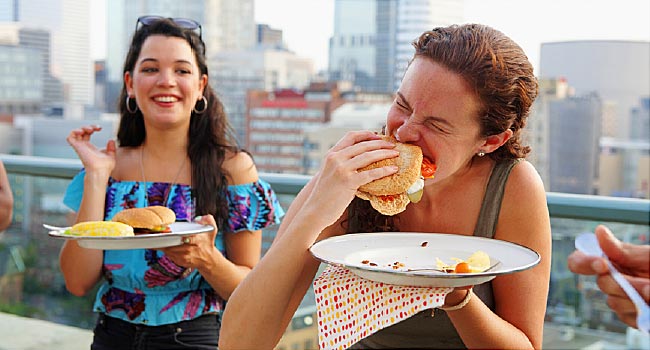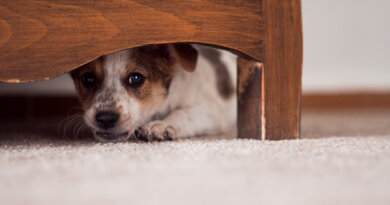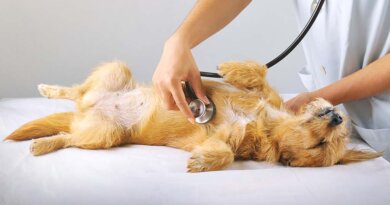How To Do Memorial Day Safely During Pandemic
May 22, 2020 — Memorial Day is often seen as the unofficial kickoff of summer, when families gather to fire up their grills or take the first road trip to the beach for a chilly but refreshing splash among the waves. This year, of course, people are not sure what to do amid concerns about the coronavirus pandemic.
Earlier this week, the CDC made a subtle change in its COVID-19 guidance, which emphasizes that the greatest risk comes from spreading the SARS-CoV-2 virus through person-to-person transmission. Contact with surfaces plays less of a role, according to CDC’s “How COVID-19 Spreads” page.
“It may be possible that a person can get COVID-19 by touching a surface or object that has the virus on it and then touching their own mouth, nose, or possibly their eyes,” the CDC writes. “This is not thought to be the main way the virus spreads, but we are still learning more about this virus.”
To reduce the possibility of infection this weekend, people should focus on avoiding that person-to-person contact. The CDC and other health organizations still recommend physical distancing of at least 6 feet between people, as well as face masks and frequent handwashing.
Still, that leaves many questions about typical Memorial Day fare, such as cookouts and swimming pools. What’s the best advice? Public health experts say plans should depend on a variety of factors — regional risk, personal risk and common sense. They shared their thoughts about specific activities, such as backyard barbecues, beaches and travel, too.
Regional risk
First, it’s important to look at the number of COVID-19 cases in your state and local community. In many states, for instance, the number of new cases is still high. Getting together with others could pose a risk for spreading infection and harm high-risk friends or family members, such as those over 65 or who have underlying medical conditions that affect the lungs, heart and liver. This could include people with asthma, diabetes and immune-related diseases.
“In Oregon where I am, there’s a huge variation in cases among the counties, where some are high-risk and some are low-risk,” said Chunhuei Chi, director of the Center for Global Health at Oregon State University.
The best plan is to maintain the “quarantine crew” or “household unit” that you’ve been with during stay-at-home orders, he said. If you stick with your shelter-in-place group during a weekend cookout, for instance, you don’t face an additional risk. If you interact with others outside of your circle, that could create a new risk, so put on those face masks and practice physical distancing in the yard.
“Just as Americans had to adapt and accept seat belts in the early ’70s, think about face masks serving the same function,” Chi said. “Face masks are the new safety belts.”
Personal risk
Next, consider your own risk for transmitting or receiving the coronavirus and whether any weekend plans could harm yourself — or others. In general, minimizing social contacts will reduce the chance that you could receive the virus or transmit it to others. Even if you don’t experience symptoms yourself, you could carry the virus and spread it to others. That’s why large social events, such as sports, concerts and religious ceremonies, have largely been shuttered for two months. As social networks widen, the potential for virus transmission goes up again.
“As we start to figure out what we can do that gets us back to some sense of normal, limit your contacts,” said Joseph Allen, assistant professor of exposure assessment science in the Harvard T.H. Chan School of Public Health. Allen has published articles in TheNew York Times, Washington Post and USA Today about road trips, airplanes and masks during the pandemic.
Personal risk depends on personal risk tolerance as well, Allen emphasized. Some people will feel more hesitant and concerned about joining others for an event, and it’s important to acknowledge and understand people’s personal preferences, he said. Rather than arguing with or taunting others, this “gradual reopening” will take a degree of cooperation, communication and trust.
“Individual risk includes what you find acceptable or not,” Allen said. “Some people may feel less comfortable with non-essential interactions.”
Common sense
Without a doubt, this summer will not be like most summers. To safely kick it off on Memorial Day weekend, everyone needs to use common sense as they make plans. Take it slow. Keep it small. Continue to use safe COVID-19 practices, such as maintaining physical distance, wearing masks and washing your hands often.
“If you want to have one small gathering over the weekend, think about ways to do it safely,” said Marybeth Sexton, assistant professor of medicine in Emory University’s Division of Infectious Diseases. “That doesn’t mean host a party, attend another party, get your hair cut and go to the grocery store three times for supplies.”
The more events and activities you do, the more people you’ll encounter, and the more likely you’ll get exposed to the virus — or even expose others. Gathering outside is a great idea, especially because ventilation is better than inside, and fresh air can dilute the virus. Meet friends at a distance and stay separated in the backyard. Keep groups under 10 people, which makes sense for people who have limited outdoors areas.
“People are getting frustrated about not seeing friends and family, and it’s important to start venturing out a little bit,” she said. “But try to keep it contained and follow safety protocols.”
Backyard hangouts
Barbecues and cookouts seem like a great idea this weekend, especially if everyone can maintain distance and handle their own items. One person should do the food preparation, and everyone should serve themselves. Use tongs or silverware instead of sticking your hand in a bag of chips, for instance. Everyone should wash their hands often and avoid touching their faces, Sexton said.
“Have individual packages or portions of things,” she said. “You definitely don’t want multiple people putting their hands into something.”
Camping and hiking
The National Park Service announced plans to reopen some areas, and many local and regional campgrounds are reopening as well. Being outdoors is a great idea, and open space reduces the risk of transmission, too. Hiking is considered “lower risk,” depending on where you choose to go and how many people are there. Take your mask with you, and put it on if you’re passing people, especially on a narrow trail, Sexton said.
For camping, the same rules apply if you’re sharing a facility or restroom. Although it’s ideal to have separate areas, washing your hands is the most important protection, she said. If you’re at a campground with staff, ask them about the cleaning and disinfection procedures.
Of course, the biggest concern with parks and campgrounds is preventing crowds. Parks may need to limit the numbers of people who can enter, and the responsibility of physical distancing will fall on those who are in the parks.
“This will take a great deal of social trust. We need to act responsibly and abide by the rules,” Allen said. “We all have to do our part in this. It’s our only way to get through this.”
Beaches
Like parks, beaches offer great possibilities for fresh air and open space, but they also face the issue of overcrowding. Local officials will need to limit numbers, if possible, by reducing available parking spots and monitoring entrances and exits. This might mean that people can’t access their favorite spots as easily as before, Allen said, and some may be turned away entirely, so be prepared for that. Some islands may choose not to reopen yet because an influx of tourists could overwhelm their hospitals or small restaurants where physical distancing isn’t possible, Sexton said, so check your destination before you go.
The added difficulty with beaches is that, although you can create distance among groups on the sand, beachgoers often pass each other to walk along the beach. In general, you can remove your face mask if you’re seated on the sand with your own group, but if you walk on the beach or talk to others, put it back on, Allen said.
“The challenge for beaches is we’ve never had to manage the flow in this way,” he said. “We may need to create lanes for people to walk and find spots, and they need to stay in the groups they traveled with to do it safely.”
Swimming pools
Some large community pools have canceled their entire 2020 season, so check availability before you go. Neighborhood pools may be closed this weekend to prevent the potential spread of infection, and others are awaiting inspection before reopening since they require state and county approval to operate. The safest option is a backyard pool with a small group of people.
Pools themselves are considered safe as long as chlorine, bromine and other chemicals are calibrated properly, since the virus doesn’t transmit through water, Sexton said. Areas around a pool — such as railings, seating and the sides of the pool — however, are “high-touch” surfaces that could have virus particles. Similar to the activities above, risk increases when more people are around, and risk decreases when you’re with the same group you’ve seen during quarantine.
“Still, be careful. It comes down to how big the crowd is and how far apart you are from other people,” Sexton said. “This is not a good time to play water polo or volleyball, where you’re touching the same objects.”
Travel
Travel should still be limited as much as possible, but if you must, don’t carpool with others who aren’t in your household, Chi said. Long-distance travel, in particular, can be an issue due to poor ventilation and interactions with others when stopping for gas, food or bathroom breaks. Wash your hands after pumping gas, and wear your mask if you need to go inside. Opt for drive-through rather than dine-in food options.
“Just like you don’t leave home without a phone or wallet, you shouldn’t leave home without a mask,” Allen said. “If you’re separated from others, it’s OK to pull the mask down, but if you’re around others in a store, you should wear it.”
Public transportation also presents potential risks as people cross paths and use high-touch surfaces such as handrails, doors and buttons. In an elevator, for instance, you might carry a pen in your back pocket to push the buttons, and then cap the exposed part and clean it later, Chi said.
“Wear a mask, and ideally, also gloves,” Chi said. “You could have one ‘dirty’ gloved hand for surfaces and one ‘clean’ hand in case you need to grab your phone, ID card or credit card.”
Hotels and vacation rentals
If you want to travel and stay overnight, first check for availability. Some resort communities, for instance, may have decreased access to food and services, Sexton said. Consider your own health concerns as well — if you experience symptoms and become sick during your trip, would you be comfortable visiting a doctor or hospital away from home?
Next, ask about cleaning and safety protocols. If you’re staying in a building with multiple guests, ask how physical distancing will work and how meals are handled. If any questions or concerns cross your mind, don’t hesitate to ask.
“We’re still in the early stages of this pandemic, and this is not the time to let our guard down,” Allen said. “Even though we’ve reached the point where we’re ready for a change, we still need systems in place to manage this effectively.”
Later this summer
Plans for upcoming holidays, such as July 4, should be based on trends in COVID-19 case numbers in coming weeks. For now, the same advice applies about distancing, handwashing and wearing face masks, Sexton said. Spend time with a small number of people to reduce the risk of transmission, and slowly increase your social contacts based on regional, local and personal risk factors.
In good news, outdoor venues, beaches and parks may have better policies later this summer to regulate parking, distancing, masks and hand hygiene. Until then, though, public health experts recommend a slow and gradual plan to meet with others and socialize again.
“We need to view this as a privilege and one that can and will need to be revoked swiftly,” Allen said. “It’s incumbent on us to do our part, otherwise we’ll be back to where we were in the last couple of months.”





indian pharmacy https://indianpharmacy.pro/#
dark web websites darknet market links